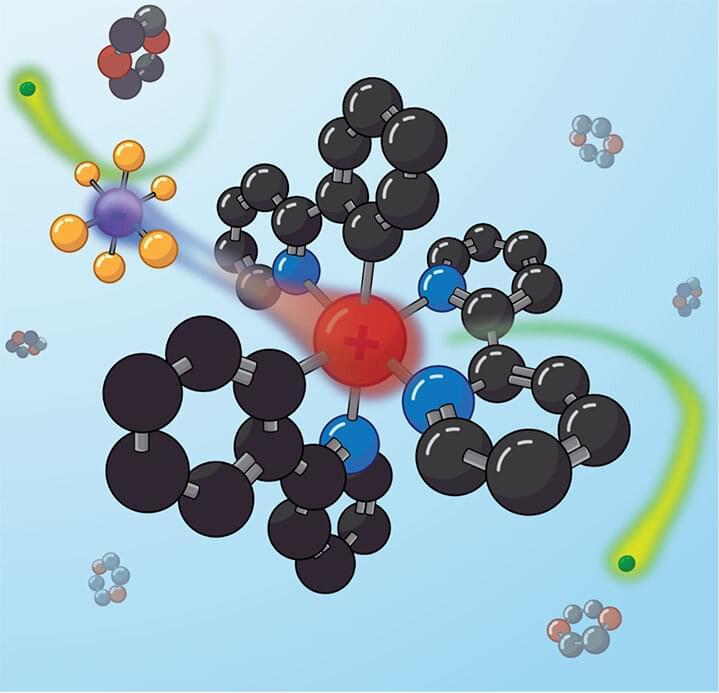TWITTER https://twitter.com/Transhumanian.
PATREON https://www.patreon.com/transhumania.
BITCOIN 14ZMLNppEdZCN4bu8FB1BwDaxbWteQKs8i.
ETHEREUM 0x1f89b261562C8D4C14aA01590EB42b2378572164.
LITECOIN LdB94n8sTUXBto5ZKt82YhEsEmxomFGz3j.
TWITTER https://twitter.com/Transhumanian.
PATREON https://www.patreon.com/transhumania.
BITCOIN 14ZMLNppEdZCN4bu8FB1BwDaxbWteQKs8i.
ETHEREUM 0x1f89b261562C8D4C14aA01590EB42b2378572164.
LITECOIN LdB94n8sTUXBto5ZKt82YhEsEmxomFGz3j.
https://youtube.com/watch?v=DGbZ9J2nlNA&feature=share
TWITTER https://twitter.com/Transhumanian.
PATREON https://www.patreon.com/transhumania.
BITCOIN 14ZMLNppEdZCN4bu8FB1BwDaxbWteQKs8i.
BITCOIN CASH 1LhXJjN4FrfJh8LywR3dLG2uGXSaZjey9f.
ETHEREUM 0x1f89b261562C8D4C14aA01590EB42b2378572164
LITECOIN LdB94n8sTUXBto5ZKt82YhEsEmxomFGz3j.
CHAINLINK 0xDF560E12fF416eC2D4BAECC66E323C56af2f6666.
https://youtube.com/watch?v=azuZgT07IOk&feature=share
PATREON : https://www.patreon.com/transhumania.
BITCOIN : 14ZMLNppEdZCN4bu8FB1BwDaxbWteQKs8i.
FACEBOOK : https://www.facebook.com/Transhumania-260675131517616
TWITTER : https://twitter.com/TranshumaniaR
You won’t be able to blame it on your genetics anymore: with CRISPR, it’s so easy to hacn into your DNA. CRISPR technology is our future, and experiments with DNA hacking are booming. CRISPR biotechnology is not science fiction anymore, it is our very near future. Would you hack and reprogram your own DNA with CRISPR? Breaking the code of life, hacking DNA at home.
Welcome to the world of a new nature. We can now literally cut and paste DNA with the new CRISPR technology. There is a revolutionary development going on that will have major consequences for humans, plants and animals. The new biotechnology is here.
‘Bio is the New Digital’. We are able to accurately reprogram the genetic code of our body cells, embryos, bacteria, viruses and plants. With the CRISPR technology we can adjust the characteristics of each organism to our needs. This allows us to permanently ban diseases, improve our body conditions and adapt plants to our food needs.
The special feature of CRISPR technology is that it is relatively simple. In the past year, the number of experiments and applications has exploded. Around the world, people have been tinkering with CRISPR: experimenting at home with the ‘Do it Yourself CRISPR kits’.
Scientists call for new ethical frameworks. The demand for the (un)desirable so-called designer babies is imminent. Although this is not yet the case, we can put an end to hereditary diseases in the short term. We may also want to make bacteria that can eat oil or plastic, pigs in which human organs can grow or bring extinct animals back to life.
It looks like science fiction but it is now closer to our reality than ever.
With: Emmanuelle Charpentier (geneticist), John van der Oost (microbiologist), Andrew Hessel (biotechnologist), Niels Geijsen (cell biologist), Josiah Zayner (biohacker) and Ivan van der Meij (FSHD patient).
Originally broadcasted by VPRO in 2018.
Visit https://brilliant.org/Veritasium/ to get started learning STEM for free, and the first 200 people will get 20% off their annual premium subscription. Digital computers have served us well for decades, but the rise of artificial intelligence demands a totally new kind of computer: analog.
Thanks to Mike Henry and everyone at Mythic for the analog computing tour! https://www.mythic-ai.com/
Thanks to Dr. Bernd Ulmann, who created The Analog Thing and taught us how to use it. https://the-analog-thing.org.
Moore’s Law was filmed at the Computer History Museum in Mountain View, CA.
Welch Labs’ ALVINN video: https://www.youtube.com/watch?v=H0igiP6Hg1k.
▀▀▀
References:
Crevier, D. (1993). AI: The Tumultuous History Of The Search For Artificial Intelligence. Basic Books. – https://ve42.co/Crevier1993
Valiant, L. (2013). Probably Approximately Correct. HarperCollins. – https://ve42.co/Valiant2013
Rosenblatt, F. (1958). The Perceptron: A Probabilistic Model for Information Storage and Organization in the Brain. Psychological Review, 65, 386–408. – https://ve42.co/Rosenblatt1958
NEW NAVY DEVICE LEARNS BY DOING; Psychologist Shows Embryo of Computer Designed to Read and Grow Wiser (1958). The New York Times, p. 25. – https://ve42.co/NYT1958
Mason, H., Stewart, D., and Gill, B. (1958). Rival. The New Yorker, p. 45. – https://ve42.co/Mason1958
Alvinn driving NavLab footage – https://ve42.co/NavLab.
Pomerleau, D. (1989). ALVINN: An Autonomous Land Vehicle In a Neural Network. NeurIPS, 1305-313. – https://ve42.co/Pomerleau1989
ImageNet website – https://ve42.co/ImageNet.
Russakovsky, O., Deng, J. et al. (2015). ImageNet Large Scale Visual Recognition Challenge. – https://ve42.co/ImageNetChallenge.
AlexNet Paper: Krizhevsky, A., Sutskever, I., Hinton, G. (2012). ImageNet Classification with Deep Convolutional Neural Networks. NeurIPS, (25)1, 1097–1105. – https://ve42.co/AlexNet.
Karpathy, A. (2014). Blog post: What I learned from competing against a ConvNet on ImageNet. – https://ve42.co/Karpathy2014
Fick, D. (2018). Blog post: Mythic @ Hot Chips 2018. – https://ve42.co/MythicBlog.
Jin, Y. & Lee, B. (2019). 2.2 Basic operations of flash memory. Advances in Computers, 114, 1–69. – https://ve42.co/Jin2019
Demler, M. (2018). Mythic Multiplies in a Flash. The Microprocessor Report. – https://ve42.co/Demler2018
Aspinity (2021). Blog post: 5 Myths About AnalogML. – https://ve42.co/Aspinity.
Wright, L. et al. (2022). Deep physical neural networks trained with backpropagation. Nature, 601, 49–555. – https://ve42.co/Wright2022
Waldrop, M. M. (2016). The chips are down for Moore’s law. Nature, 530144–147. – https://ve42.co/Waldrop2016
▀▀▀
Special thanks to Patreon supporters: Kelly Snook, TTST, Ross McCawley, Balkrishna Heroor, 65square.com, Chris LaClair, Avi Yashchin, John H. Austin, Jr., OnlineBookClub.org, Dmitry Kuzmichev, Matthew Gonzalez, Eric Sexton, john kiehl, Anton Ragin, Benedikt Heinen, Diffbot, Micah Mangione, MJP, Gnare, Dave Kircher, Burt Humburg, Blake Byers, Dumky, Evgeny Skvortsov, Meekay, Bill Linder, Paul Peijzel, Josh Hibschman, Mac Malkawi, Michael Schneider, jim buckmaster, Juan Benet, Ruslan Khroma, Robert Blum, Richard Sundvall, Lee Redden, Vincent, Stephen Wilcox, Marinus Kuivenhoven, Clayton Greenwell, Michael Krugman, Cy ‘kkm’ K’Nelson, Sam Lutfi, Ron Neal.
▀▀▀
Written by Derek Muller, Stephen Welch, and Emily Zhang.
Filmed by Derek Muller, Petr Lebedev, and Emily Zhang.
Animation by Iván Tello, Mike Radjabov, and Stephen Welch.
Edited by Derek Muller.
Additional video/photos supplied by Getty Images and Pond5
Music from Epidemic Sound.
Produced by Derek Muller, Petr Lebedev, and Emily Zhang.
▶ Check out Brilliant with this link to receive a 20% discount! https://brilliant.org/NewMind/
The millennia-old idea of expressing signals and data as a series of discrete states had ignited a revolution in the semiconductor industry during the second half of the 20th century. This new information age thrived on the robust and rapidly evolving field of digital electronics. The abundance of automation and tooling made it relatively manageable to scale designs in complexity and performance as demand grew. However, the power being consumed by AI and machine learning applications cannot feasibly grow as is on existing processing architectures.
THE MAC
In a digital neural network implementation, the weights and input data are stored in system memory and must be fetched and stored continuously through the sea of multiple-accumulate operations within the network. This approach results in most of the power being dissipated in fetching and storing model parameters and input data to the arithmetic logic unit of the CPU, where the actual multiply-accumulate operation takes place. A typical multiply-accumulate operation within a general-purpose CPU consumes more than two orders of magnitude greater than the computation itself.
GPUs.
Their ability to processes 3D graphics requires a larger number of arithmetic logic units coupled to high-speed memory interfaces. This characteristic inherently made them far more efficient and faster for machine learning by allowing hundreds of multiple-accumulate operations to process simultaneously. GPUs tend to utilize floating-point arithmetic, using 32 bits to represent a number by its mantissa, exponent, and sign. Because of this, GPU targeted machine learning applications have been forced to use floating-point numbers.
ASICS
These dedicated AI chips are offer dramatically larger amounts of data movement per joule when compared to GPUs and general-purpose CPUs. This came as a result of the discovery that with certain types of neural networks, the dramatic reduction in computational precision only reduced network accuracy by a small amount. It will soon become infeasible to increase the number of multiply-accumulate units integrated onto a chip, or reduce bit-precision further.
LOW POWER AI
▶ Check out Brilliant with this link to receive a 20% discount! https://brilliant.org/NewMind/
During the middle ages, the concept of the perpetual motion machine would develop. The first law, known as the Law of Conservation of Energy, would prohibit the existence of a perpetual motion machine, by preventing the creation or destruction of energy within an isolated system.
MAXWELL’S DEMON
In 1,867 James Clerk Maxwell, the Scottish pioneer of electromagnetism, conceived of a thermodynamic thought experiment that exhibited a key characteristic of a thermal perpetual motion machine. Because faster molecules are hotter, the “beings” actions cause one chamber to warm up and the other to cool down, seemingly reversing the process of a heat engine without adding energy.
ENTROPY
Despite maintaining the conservation of energy, both Maxwell’s demon and thermal perpetual motion machines, contravened, arguably one of the most unrelenting principles of thermodynamics. This inherent, natural progression of entropy towards thermal equilibrium directly contradicts the behavior of all perpetual motion machines of the second kind.

As the poet Dylan Thomas once explained, it is “the force that through the green fuse drives the flower.”
Organic photochemistry brings life to Earth, allowing plants to “eat” sunlight. Using this power of light to make new molecules in the lab instead of the leaf, from fuel to pharmaceuticals, is one of the grand challenges of photochemical research.
What is old is new again. Sometimes gaining new insight requires a return to old tools, with a modern twist. Now, a collaborative team from the National Renewable Energy Laboratory (NREL) and Princeton University has resurrected a century-old microwave technique to reveal a surprising feature of well-established light-driven chemistry.
Researchers from the Max Planck Institute for Polymer Research have developed a drug that disrupts the adaptability of cancer cells!
Abstract: in situ assembly of platinum(ii)-metallopeptide nanostructures disrupts energy homeostasis and cellular metabolism.
https://pubs.acs.org/doi/10.1021/jacs.2c03215
Max Planck Institute for Polymer Research Press Release: https://www.mpip-mainz.mpg.de/en/press/pr-2022-09
#cancer.
#cancertreatment.
#cancersupport.
#cells.
#cancertreatment.
#chemotherapy.
#radiationtherapy.
#evolution.
#oncology.
#oncologist.
#science

Were you unable to attend Transform 2022? Check out all of the summit sessions in our on-demand library now! Watch here.
The mainframe, the hardware stalwart that has existed for decades, is continuing to be a force in the modern era.
Among the vendors that still build mainframes is IBM, which today announced the latest iteration of its Linux-focused mainframe system, dubbed the LinuxOne Emperor 4. IBM has been building LinuxOne systems since 2015, when the first Emperor mainframe made its debut, and has been updating the platform on a roughly two-year cadence.